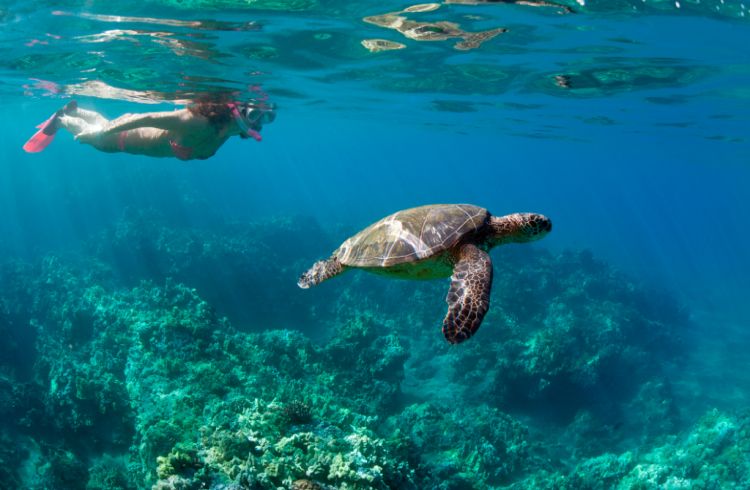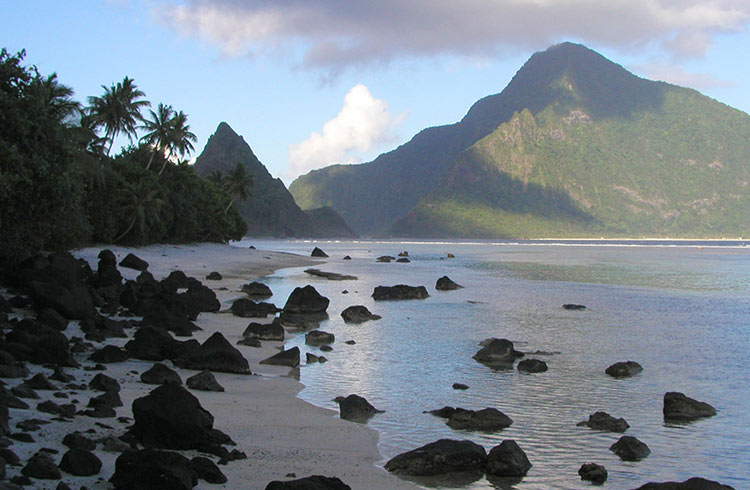7 Travel Safety Tips for Your Next Adventure in Hawaii
For adventure travelers, the island paradise of Hawaii has a large variety of activities to suit all tastes. Here are our tips to make sure your time is a safe and memorable one.
 Photo © Getty Images/M.M.Sweet
Photo © Getty Images/M.M.Sweet
Each of the four major islands – Hawaii, Maui, Oahu and Kauai – offers a unique kind of beauty and opportunities for adventure. From seeing active lava flows and hiking through bamboo forests to hidden waterfalls, to scuba diving with manta rays or stargazing from the top of a volcano. While Hawaii remains one of the most enchanting island destinations in the world, this destination is not for the faint of heart when it comes to exploration, and more specifically, safe exploration.
- Ocean safety
- Anticipate your needs
- Designate an adventure buddy
- If there's no path, there's a reason
- Don't selfie your way into oblivion
- Beware of flash flooding
- Enjoy the experiences safely
1. Ocean safety
For centuries, Hawaiians have held a deep respect for the ocean and it's something that every traveler should also do. Many ocean currents can not be easily seen from the shore so it's important to not swim or kayak alone. Calm water is not always safe water to swim in.
Hawaii has hundreds of stunning beaches, but throw in strong rip currents and shore breaks and that can present challenges for anyone unaccustomed to swimming there. Makena "Big" Beach on Maui has a strong shore break and many visitors are seriously injured there every year, despite the many warning signs posted on the beach and vocalized by lifeguards. To avoid potential accidents, obey any warning signs, spend at least a couple of minutes watching the waves and other swimmers in the area before jumping in yourself. Remember to duck under large waves instead of attempting to jump over them. When in doubt, don't go out especially if you have been drinking heavily. Wherever possible, swim at a patrolled beach location where lifeguards are available.
Rip currents are responsible for carrying many swimmers out from the shoreline and it's important if you do get caught in one to remain calm and wave to attract attention for rescue. Do not fight the rip.
If swimming at an unpatrolled beach, always remain calm and swim parallel to the beach. Head towards the breaking waves.
There are many great spots where you can jump off/dive into the water however it pays to check the depth or find out where the safe spots are. Many locals and visitors suffer spinal injuries annually from diving into shallow water. If the water is unclear or murky, don't do it.
Portuguese Man 'O War or blue bottles can often be found at beaches, so it pays to watch your step. But if you are in the water and you get stung by their long tentacles, carefully remove any remaining tentacles from your skin and wash the area in hot water (113°F or 45°C). Seek medical treatment.
Sharks are often seen around Hawaii, but you're more likely to end up in a car accident on the way to the beach than being bitten. You can stay safe by being in the water during dawn or dusk, or during signs of baitfish activity including birds dive bombing to feed and swimming at a patrolled beach.
Jellyfish can often frequent beach areas around the time of a full moon and often there will be signs located in areas which get a heavy influx. If you do get stung, wash the area with freshwater and if you have further troubles e.g breathing, pain, call 911 for medical assistance.
A good rule of thumb for visiting blowholes is if the ground is wet, don't stand there. Blowholes are the human equivalent of bug zappers - as tempting as it is to get as close as possible, don't do it. They're amazing to watch in action, but we guarantee you absolutely don't want to experience what it's like to get sucked into one. Keep a safe viewing distance by sticking to dry ground.
2. Anticipate your needs
When setting out on a full day adventure, make sure to pack everything you're likely to need and want, including plenty of drinking water, snacks, protective clothing, proper footwear, a map, and more. Make sure to tell other members of your party (or your accommodation manager, if traveling solo) of your whereabouts and general planned time of return, should anything go wrong. While the chance of serious danger or accidents is small, the island's many nooks and crannies can make it difficult to pinpoint missing individuals when certain areas can't be initially ruled out.
3. Designate an adventure buddy
Most accidents, especially in the ocean, occur when people get separated from the group or decide to go out on their own. Be sure to designate a partner when swimming, snorkeling, scuba diving, and even paddle boarding and kayaking, and keep a special watch on both younger and older members of your group. While joining tours with experienced, professional tour guides can offer reassurance, be sure to accurately report any vital information, including serious health conditions pertaining to you or any member of your group, before the tour begins.
4. If there's no path, there's a reason
If ocean sports aren't your cup of tropical adventure, no worries. Each Hawaiian island has a variety of land activities and hiking trails, perfect for all fitness levels. And while Hawaii is an amazing place to hike due to the many available microclimates, scenic views and the fact that there's zero poisonous snakes, it's still recommended to stick to the worn trails and paths during your adventure.
First, hiking too far into uncharted territory may cause confusion when trying to find your way back out - more than a few groups of people have had to be helicoptered out - and also, you could end up accidentally trespassing on private property without knowing it. Stick to the trails, and you'll be treated to otherworldly, picture-perfect views without putting yourself in unnecessary danger.
5. Don't selfie your way into oblivion
Once upon a time, sharks were the major concern when visiting the Hawaiian Islands. Today, you're not only more likely to die by way of falling coconut, but also selfie'ing yourself right off the side of a dang cliff. While we encourage you to capture the beauty of your next trip to paradise, make sure your waterfall selfie isn't the last one you ever take.
6. Beware of flash flooding
In Hawaii, a relaxing swim at a remote waterfall can quickly turn into a scary encounter or close call with a surprise flash flood. Since heavy rainfall is common in certain areas of each island it’s wise to keep an eye on weather forecasts, and avoid long hikes along waterways if rainfall is likely. In the event of flash flooding, move to higher ground as quickly as possible, and contact emergency personnel for assisted evacuation.
7. Enjoy the experiences safely
Perhaps more than other island destinations, Hawaii is the place to push your adventurous side to new levels. This doesn't mean, however, you have to do so while putting yourself in danger. Paragliding off the side of the world's largest dormant volcano, outrigger canoeing with humpback whales, ziplining above lush valleys, helicoptering alongside the world's steepest sea cliffs, rappelling down waterfalls, windsurfing at one of the world's best windsurfing beaches, scuba diving with sharks, and many more opportunities exist with a proper guide. There's simply no need to attempt to set a new time record stand up paddle boarding between the islands. Know your limits.
While many of these warnings are good advice for any travel destination, Hawaii's powerful waves, wind and array of thrilling outdoor activities make it a particularly accident-prone vacation destination. Keep your island travel smarts about you, and have the vacation of a lifetime. Aloha!
Related articles
Simple and flexible travel insurance
You can buy at home or while traveling, and claim online from anywhere in the world. With 150+ adventure activities covered and 24/7 emergency assistance.
Get a quote
No Comments